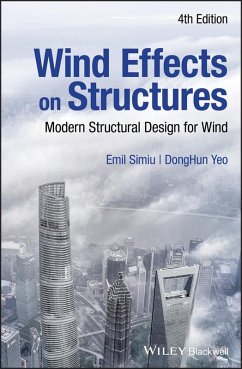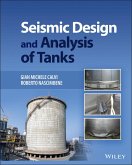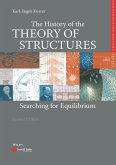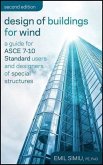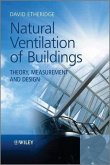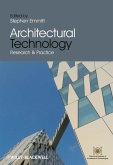Provides structural engineers with the knowledge and practical tools needed to perform structural designs for wind that incorporate major technological, conceptual, analytical and computational advances achieved in the last two decades. With clear explanations and documentation of the concepts, methods, algorithms, and software available for accounting for wind loads in structural design, it also describes the wind engineer's contributions in sufficient detail that they can be effectively scrutinized by the structural engineer in charge of the design. Wind Effects on Structures: Modern Structural Design for Wind, 4th Edition is organized in four sections. The first covers atmospheric flows, extreme wind speeds, and bluff body aerodynamics. The second examines the design of buildings, and includes chapters on aerodynamic loads; dynamic and effective wind-induced loads; wind effects with specified MRIs; low-rise buildings; tall buildings; and more. The third part is devoted to aeroelastic effects, and covers both fundamentals and applications. The last part considers other structures and special topics such as trussed frameworks; offshore structures; and tornado effects. Offering readers the knowledge and practical tools needed to develop structural designs for wind loadings, this book: * Points out significant limitations in the design of buildings based on such techniques as the high-frequency force balance * Discusses powerful algorithms, tools, and software needed for the effective design for wind, and provides numerous examples of application * Discusses techniques applicable to structures other than buildings, including stacks and suspended-span bridges * Features several appendices on Elements of Probability and Statistics; Peaks-over-Threshold Poisson-Process Procedure for Estimating Peaks; estimates of the WTC Towers' Response to Wind and their shortcomings; and more Wind Effects on Structures: Modern Structural Design for Wind, 4th Edition is an excellent text for structural engineers, wind engineers, and structural engineering students and faculty.
Dieser Download kann aus rechtlichen Gründen nur mit Rechnungsadresse in A, B, BG, CY, CZ, D, DK, EW, E, FIN, F, GR, HR, H, IRL, I, LT, L, LR, M, NL, PL, P, R, S, SLO, SK ausgeliefert werden.

